Don
Quixote
Ludwig Minkus / Marius Petipa, Aleksandr Gorski, Alexei Fadeyechev
Ballet in three acts
Libretto: Marius Petipa based on the novel by Miguel de Cervantes
Premiere: 29 May 2014
Co-production: Royal Ballet of Flanders, Antwerp
A court ballet called Don Quichotte was danced at the royal Louvre as early as 1614 (!). After that, themes from Cervantes’ work found a permanent place in ballet, with dozens of new arrangements being created over the next 400 years. A true sensation, however, came with the ballet by Marius Petipa to music by Ludwig Minkus (1869), because it continues to be staged to this day, refreshed and processed by successive generations of choreographers. What is the source of its endurance and popularity? The picturesque scenery of old Spain, alluring Gypsy women and ornately dressed toreadors, the knight-errant of La Mancha, the comic Sancho Panza and the clumsy Gamache are always popular. The main characters, Kitri and Basilio, are unparalleled in the classical repertoire as far as grace, temperament and dance virtuosity goes. Together this creates an exciting classical dance revue in the Spanish style.
Cast
Credits
Polish National Ballet
Orchestra of the Teatr Wielki – Polish National Opera
Synopsis
Sponsors
-
Mecenas Teatru Wielkiego - Opery Narodowej
-
Partnerzy Teatru Wielkiego - Opery Narodowej
-
Partner Polskiego Baletu Narodowego
-
Patroni medialni Teatru Wielkiego - Opery Narodowej
-
Patron of Teatr Wielki - Polish National Opera
-
Partners of Teatr Wielki - Polish National Opera
-
Partner of the Polish National Ballet:
-
Media patrons of Teatr Wielki - Polish National Opera







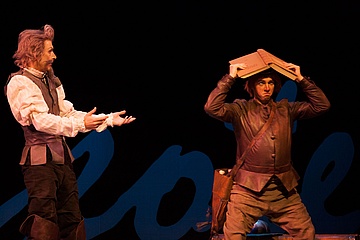











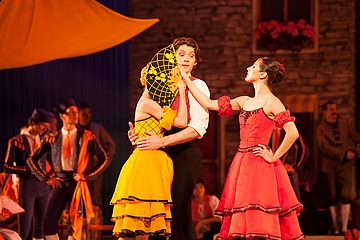









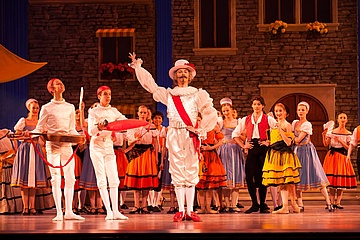






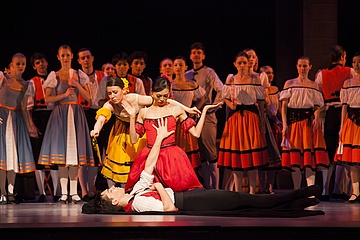










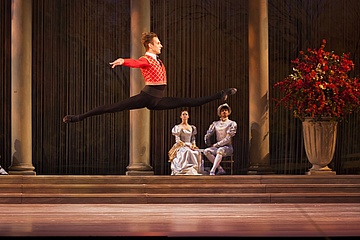



 Yuka Ebihara
Yuka Ebihara ![[Translate to English:] Maksim Woitiul](/fileadmin/_processed_/3/c/csm_maksim_woitiul_www_mini_45f943f354.jpg) Maksim Woitiul
Maksim Woitiul  Chinara Alizade
Chinara Alizade  Ana Kipshidze
Ana Kipshidze  Łukasz Tużnik
Łukasz Tużnik  Paweł Koncewoj
Paweł Koncewoj  Aneta Zbrzeźniak
Aneta Zbrzeźniak  Dagmara Dryl
Dagmara Dryl Mai Kageyama
Mai Kageyama ![[Translate to English:]](/fileadmin/import/uploads/tx_news/Carlos_Martin_Perez_new_02.jpg) Carlos Martín Pérez
Carlos Martín Pérez  Patryk Walczak
Patryk Walczak![[Translate to English:] Dawid Trzensimiech](/fileadmin/_processed_/a/8/csm_Dawid_Trzensimiech_www_mini__fot._Ewa_Krasucka_2888-BW_7b1c0dc642.jpg) Dawid Trzensimiech
Dawid Trzensimiech Michał Chróścielewski
Michał Chróścielewski  Bartosz Anczykowski
Bartosz Anczykowski  Yurika Kitano
Yurika Kitano  Rinaldo Venuti
Rinaldo Venuti Kristóf Szabó
Kristóf Szabó ![[Translate to English:]](/fileadmin/import/media/img/ludzie/tancerze/medium/Vladimir_Yaroshenko_2024_-_kwadrat.jpg) Vladimir Yaroshenko
Vladimir Yaroshenko  Natalia Pasiut
Natalia Pasiut Melissa Abel
Melissa Abel  Ewa Nowak
Ewa Nowak  Jordan Bautista
Jordan Bautista ![[Translate to English:]](/fileadmin/_processed_/4/1/csm_Anna_Czeszejko_www_2024_22af0e62d9.jpg) Anna Czeszejko
Anna Czeszejko Marta Fiedler
Marta Fiedler  Shunsuke Mizui
Shunsuke Mizui Marius Petipa
Marius Petipa  Aleksandr Gorski
Aleksandr Gorski ![[Translate to English:]](/fileadmin/_processed_/7/7/csm_Fadeyechev-Alaxei-fot.-O.-Wozlublenna_86ec472914.jpg) Alexei Fadeyechev
Alexei Fadeyechev  Alexei Baklan
Alexei Baklan  Thomas Mika
Thomas Mika  Steen Bjarke
Steen Bjarke 


